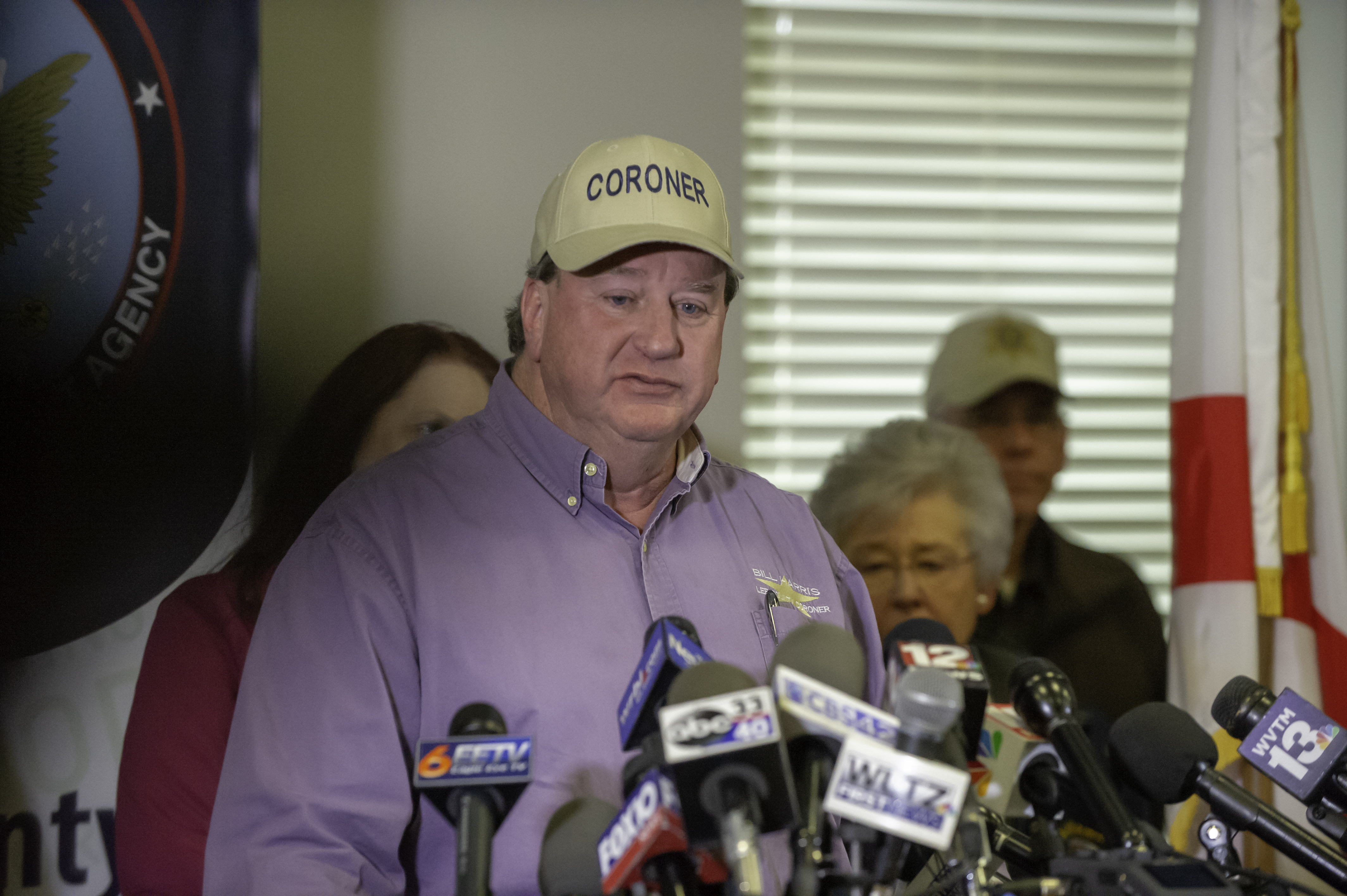By Morgan Bryce
Editor
Traveling down Marvyn Parkway on March 3, Lee County Coroner Bill Harris remembers how he felt as reports of casualties from that afternoon’s EF-4 tornado flooded local radio frequencies.
“The first report was three confirmed casualties, and I thought to myself, ‘this is worse than I thought.’ As we got further down the road there was reports of it being five casualties, and I began wondering what I had gotten myself into,” Harris said.
As Harris neared the Beauregard Volunteer Fire Department on Highway 51, he encountered the outer rainbands of the second tornado, an EF-2, forcing him to take cover behind the elementary school.
The scene at the fire department was chaotic, according to Harris. With previous experience as East Alabama Medical Center’s paramedic supervisor, he worked alongside fire chief Michael Holden and others to coordinate the transportation of the more than 70 injured to receive medical aid.
As more bodies were recovered and brought to the station, Harris decided to relocate across the street to the high school to begin the identification process. That evening, all 23 of the victims were recovered, 22 on the scene and one who later died in the emergency room.
With darkness encroaching, Harris said he felt a sense of dread about what the next day’s findings would bring.
“In my mind, there was no doubt that we were going to find more victims, just based on the devastation down there. They had to call off operations that night because things got too dangerous,” Harris said. “And thankfully, there were no more … which was just a miracle.”
The victim-identification process went smoother than expected, as first responders and members of the statewide mortuary response team helped Harris avoid having to bring families to personally view the body of their potential loved one.
Amidst the work and ongoing search-and-recovery process was numerous local and national media requests for interviews. Participating in most of that week’s press conferences held at Beauregard High School, he said it was his first time to appear on the national stage.
“It was no different than anything I’d done before, just a whole lot more cameras in front of me. My job was to tell the truth and what the story was,” Harris said.
After identifying the final victim on the afternoon of March 4, Harris’s work was finished when official search-and-recovery efforts ended Tuesday evening. On Friday of that week, he was able to meet President Donald J. Trump and First Lady Melania during their visit to Providence Baptist Church, a meeting he deemed an honor.
“Just by chance I was able to get into the church and meet him as he spoke to the volunteers. He talked to me briefly and thanked me for what I had done … then, the First Lady asked if my family and I were ok and I said, ‘yes ma’am. Thank you for asking,’” Harris said. “People were asked to take off any MAGA hats they were wearing because it wasn’t a political visit. I believe in his heart that he cares about us and the American people as a whole.”
Twenty-three deaths marks the highest number of fatalities Harris said he has witnessed in his 21 years as coroner, and the greatest natural disaster to strike Lee County in his lifetime.
Along with improved preparedness plans for when the next disaster strikes, Harris said he believes this is a galvanizing moment in time for Lee County citizens as they rebuild and restore what was lost.
“Lee County is a great place with great people. There’s no doubt that we will come back stronger than ever, but it will take years before we fully recover from this,” Harris said. “I pray I never have to be a part of something like this again.”

